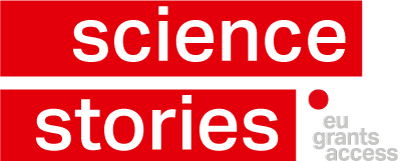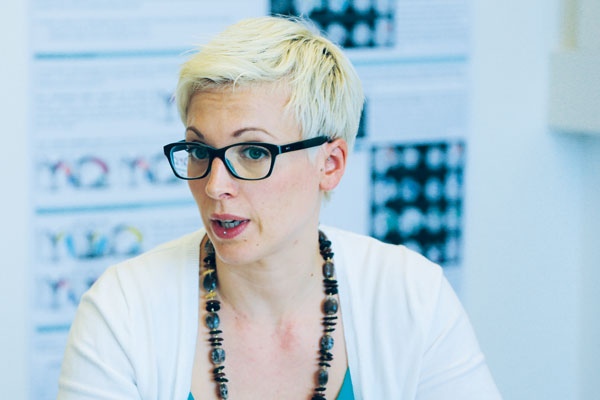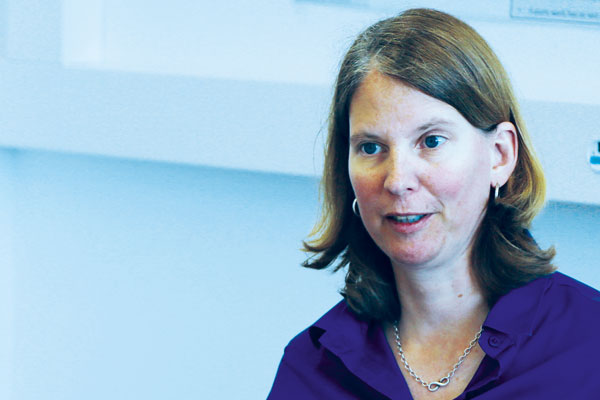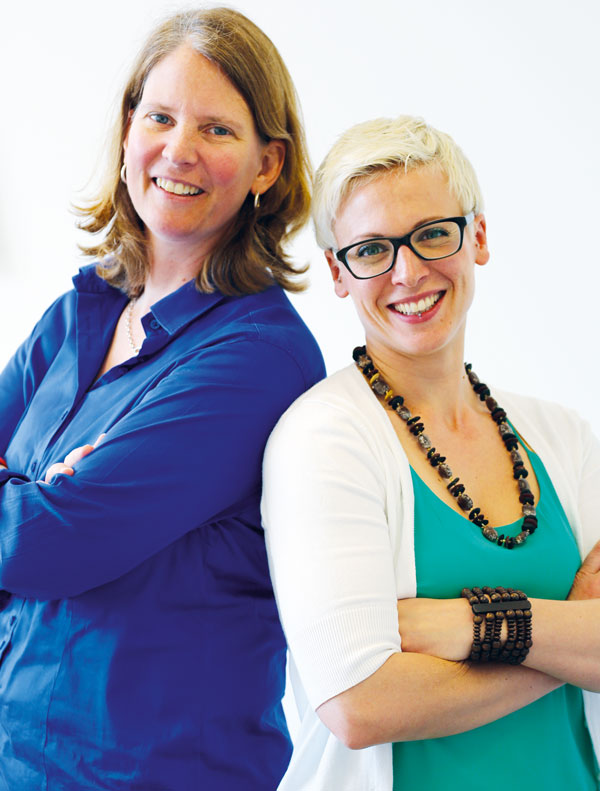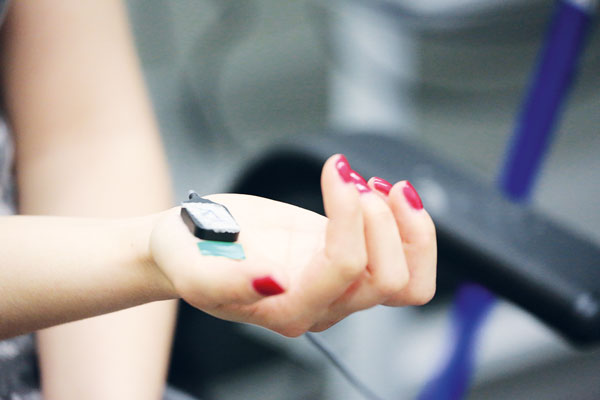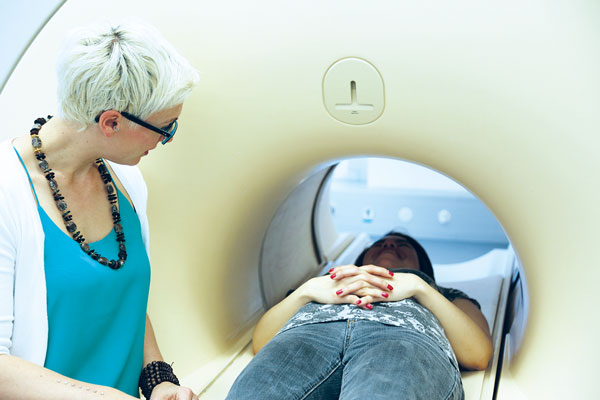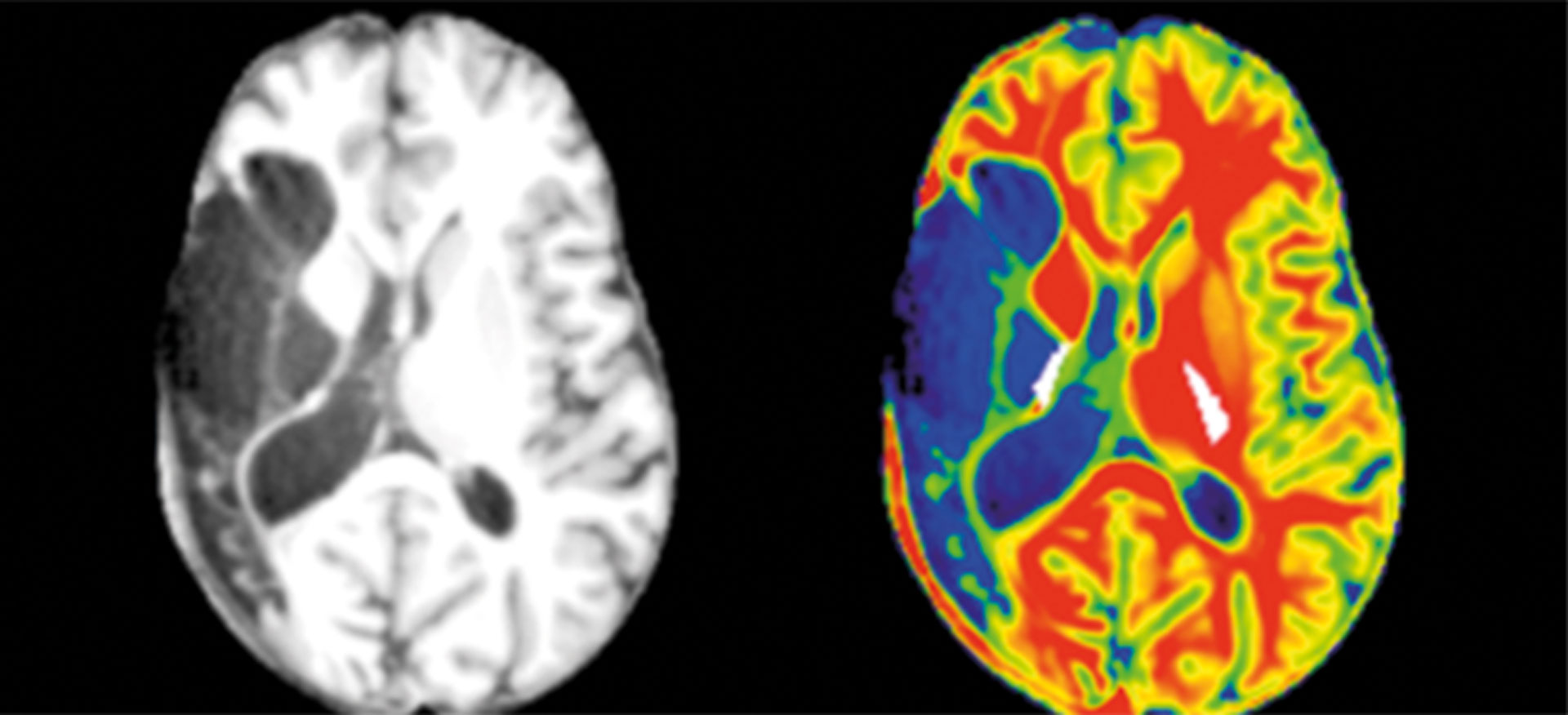
Take off with Marie Skłodowska-Curie
Two views on an EU Excellent Science Programme
Why a young postdoc and an experienced professor jointly applied for a Marie Curie Fellowship, what they hoped to achieve and how they each benefited from the Horizon 2020 programme for young researchers. – An interview with Ellen Jaspers and Nicole Wenderoth.
Ellen, why did you apply for a Marie Curie Fellowship?
I was motivated to apply because this scholarship offers young researchers a great opportunity to move on in their career. It allows you to go to a host lab and gain further expertise in your specific areas. I chose the Neural Control of Movement lab at ETH Zurich because of its excellence within the field of neuroscience.
So one day you decided to apply for a Marie Curie Fellowship?
When you do research there is always the question of searching for money or applying for grants to improve your CV and climb up the academic ladder. I think the Marie Curie Fellowship is a perfect stepping stone to enhance your CV. As I also really wanted to pursue a research career abroad, applying for a Marie Curie Fellowship was the perfectly logical next step.
The success rate is very low; how did you attain the Fellowship?
Writing the application was a challenge: you want to present innovative ideas and show that you are going to add value to the research that is already out there. The key was talking a lot with Nicole Wenderoth from the Neural Control of Movement lab about what’s feasible, what might be interesting, what’s already there, and what’s still needed in the field of neuroscience. With my clinical background I could then also assess how the project would be clinically valuable. The combination of all these different angles and viewpoints definitely gave the project an added value, which was why it succeeded.
How did you find your host, the Neural Control of Movement lab led by Nicole Wenderoth?
Well, I met Nici during my PhD studies in Leuven. She then moved to Zurich to start up the Neural Control of Movement lab. After completing my PhD I was still left with the question of what defines upper limb functions: I saw many children with CP (cerebral palsy) and so much variability in their functioning which we couldn’t explain just by measuring them clinically. So I wanted to investigate this and address the variability from a neuroscience point of view. I contacted Nici knowing she had an interest in doing further clinically applied research. We had a joint idea, one thing led to another, and that’s how the project application was written.
What could Nicole Wenderoth and her team in Zurich offer you?
Nici has a lot of experience, for example in transcranial magnetic stimulation and in all the neuroimaging techniques I wanted to apply. For me it was crucial to learn these techniques, not only as a user but also from an analysis point of view. Nici and her team helped me a lot in gaining this specific expertise. The lab is a perfect base for setting up the project and gaining knowledge in the different neuroimaging techniques. And of course, Nici, with her keen, analytical mind helps me through. Every time we talk I walk away with new ideas and an ever greater motivation. That’s really what keeps me going.
What is the main thing you gain from this Marie Curie Fellowship?
Without the Marie Curie grant I wouldn’t be here and I wouldn’t be doing this research. I wouldn’t have the whole CP research line being set up now. I think it’s a massive boost to get an opportunity that would otherwise not be there because of finance – you need money to do research. And now I’ve also got this really nice fellowship to put on my CV. If you think about the future, this is undoubtedly an added value.
What would you recommend to young researchers applying for a Marie Curie Fellowship?
Have a good CV to start with. And really find a project where you can show that it’s the combination of you as a researcher and your host institute that takes it to the next level. As in my case, without Nici’s lab I would not have been able to do this research; and Nici would also not have been able to set up this CP research line here without me. So I truly believe it’s the combination of two people – the mentor from the host lab and the researcher – that creates an added value from which both benefit.
What are your plans for the future?
Well, first I want to finish my Marie Curie Fellowship, which ends in December of this year. And then I hope to be able to continue in this lab. The next logical step would be to apply for a professorship. Maybe not within ETH, but to go just one step further and set up my own research group. If I manage to set up the CP research line successfully it will offer the perfect base for starting my own research group, getting my own PhD students and taking my research to the next level.
And would you like to become a professor?
Being a professor would be a nice option, yes. But we also have to be realistic – it’s still academia, it’s still competitive. But in an ideal world, yes!
How did you and Ellen Jaspers come to agree on a Marie Curie Fellowship?
You know, all good things start in the kitchen. And it actually was in a kitchen where Ellen’s Marie Curie Fellowship began. At that time I was thinking about how to build up my lab at ETH Zurich. I knew that Ellen had just finished her PhD and was looking for a postdoc position. Ellen was not only an academically trained physiotherapist, but also a physiotherapist with a PhD in biomedical science. So she understands both sides very well – fundamental research as well as clinical research. That was exactly the expertise I needed for my new lab in Zurich. So we met over a coffee and eventually I suggested that she came to ETH and start the lab with me.
And how did you get to know Ellen?
We knew each other from the Catholic University of Leuven. She was in a different department and I was actually part of her PhD committee. So I knew both her research work and Ellen as a person quite well.
So you both decided to apply for a Marie Curie Fellowship to bring Ellen to Zurich?
Well, I think the Marie Skłodowska-Curie Fellowships are fantastic funding instruments, both for us as professors and also for postdocs. When I looked at Ellen’s CV, I thought she would be the perfect candidate for a Marie Curie Fellowship. Also the project she was working on could only be carried out within a bigger network. The difficulty with clinical research is that you need a large data set to prove that new interventions might work. It is very hard to do this research within a reasonable time in only one country. The European funding offered us a great chance because one of its aims is indeed to foster the cooperation of several partners across Europe. Ellen’s project fitted into this pattern precisely, as cooperation with labs and clinics in Europe was a crucial element. Ellen now commutes between Switzerland, Belgium and the Netherlands, where we have clinical partners with a similar interest. We exchange patient data and new methods, and we communicate intensively with each other to push the project forward.
So you both sat down together and wrote this application?
Yes, as a professor you have a feeling for candidates who have an outstanding CV, and Ellen was one of them. But the deciding factor for me was that Ellen had already made a lot of impact with her work. Despite being quite a young researcher, the tool she developed during her PhD has already been implemented by other groups across Europe. If you do research in a clinical setting that is exactly what you want to happen.
In writing the application we demonstrated her expertise, our own expertise in the lab, and especially how they complement each other and what synergy this would produce. Another aspect we focused on was developing Ellen as a fellow. Our postdocs are not just here to be independent researchers. We also want to offer them further training and the opportunity to build up their own career, so they can stay in academia. They are the best talents we have, and it would be a great pity if they dropped out. So I believe we should do whatever we can do to promote and keep our talent.
And what do you expect from this fellowship?
It offers us an excellent opportunity to translate knowledge all the way from particularly high-tech fundamental research to methods that we think might – in the long run – be useful for improving therapy planning. For me this is the really exciting perspective. But let’s be absolutely clear: this project is only happening because Ellen is here.
In which way do you and your lab benefit from Ellen and her fellowship?
Firstly, Ellen brought expertise to our lab that would have been difficult to find otherwise. As I said, Ellen is a physiotherapist with a PhD. You don’t find many of these experts in Europe and you hardly find any in Switzerland or Germany. Secondly, running clinical studies is an art and working with children is particularly demanding. Ellen had experience in performing this type of clinical research. So we’ve started a new line of research and built up a new network of collaborators and connections. From there we want to strengthen and continue this research line even once Ellen has left our lab.
Would you encourage professors to host a Marie Skłodowska-Curie fellow?
Yes, I would definitely recommend they do so. Of course, the prerequisite is finding an excellent postdoc as a fellow. But if you find this person and if you can develop a project together with your fellow, you bring top-quality scientific expertise as well as cultural diversity to your lab. And this benefits everybody: you, your team, and the fellow.
But don’t some professors think all the form-filling takes too much energy and time?
Here in Zurich we have the EU GrantsAccess Office and they help a lot with administration, both when applying for a grant and also later on. For Ellen, the administration and the financing part of the application was handled entirely by the EU GrantsAccess Office. They made it extremely easy for us to apply.
Ellen’s fellowship will end this year. Are you already looking for another Marie Skłodowska-Curie fellow?
I’ll take Marie Skłodowska-Curie fellows any time. As soon as I spot a talent on the market, I’ll definitely try again!
New hope for cerebral palsy patients
Cerebral palsy (CP), caused by a lesion of the developing infant brain is the most common cause of childhood physical disability. Children with CP experience lifelong impairments of motor and sensory functions that restrict their independence in daily life and put a high emotional and financial burden on families, caretakers and society. An early well targeted rehabilitation therapy could help to minimize long-term disability and maximize the child’s daily functioning. However, the development of such therapies firstly requires clear and simple diagnostic measurement methods. Therefore the overall goal of Ellen Jasper‘s project is to identify neural biomarkers that are linked to sensorimotor dysfunction of a child. Based on these findings, she then intends to develop a series of simple tests for clinic use such as the young CP patients can be categorized and get a tailor made treatment. To identify the associations between neural biomarkers and arm and hand dysfunctions, Ellen Jaspers performs several tests in children and adolescents with CP in Belgium and in Switzerland. These tests include transcranial magnetic stimulation to see which side of the brain controls which hand, screening technics like MRI to look at the anatomy and the structural connectivity of the brain but also behavioral measurements. At the moment Ellen Jaspers expects to define about five different categories, which then could be identified with a few simple tests in the daily routine of a clinic. This is still a future vision and Ellen still has a long way to go. But with her research enabled by the Marie Curie Fellowship and the support of Nicole Wenderoth, Ellen Jaspers has paved the way for a new research line which is not only scientifically challenging but also opens promising perspectives for young CP patients.
EU GrantsAccess’ Marie Skłodowska-Curie Actions Group
The Marie Skłodowska-Curie Actions (MSCA) Group at EU GrantsAccess aims to keep on top of the often changing regulations of the MSCA in order to ensure high-quality advice at ETH Zurich and at the University of Zurich. The group meets regularly to discuss new calls or changes and is in contact with the relevant sections at ETH Zurich and the University of Zurich, such as the finance departments and Human Resources. This means that young MSCA researchers enjoy a smooth- running fellowship and can focus on their project. A big asset of the MSCA group is their close collaboration with the National Contact Points for MSCA at the Euresearch Head Office in Berne. Here, Sibylla Martinelli and Juliane Sauer keep abreast of the newest developments and results through ongoing contact with the executive agencies in Brussels and their peers in Europe.
Members of the Marie Skłodowska-Curie Actions Group:
Frédérique Amor, Annika Glauner, André Wunder, Alexandra Zingg
Interview with Ellen Jaspers & Nicole Wenderoth
Marie Curie Fellowship SeMoRe-CP
SeMoRe-CP – Identifying structural and functional biomarkers of the brain indicating SensoriMotor Recovery in Cerebral Palsy
Host: ETH Zurich, Nicole Wenderoth, Fellow: Ellen Jaspers
FP7-PEOPLE-2013-IEF – Marie-Curie Action:
„Intra-European fellowships for career development“
